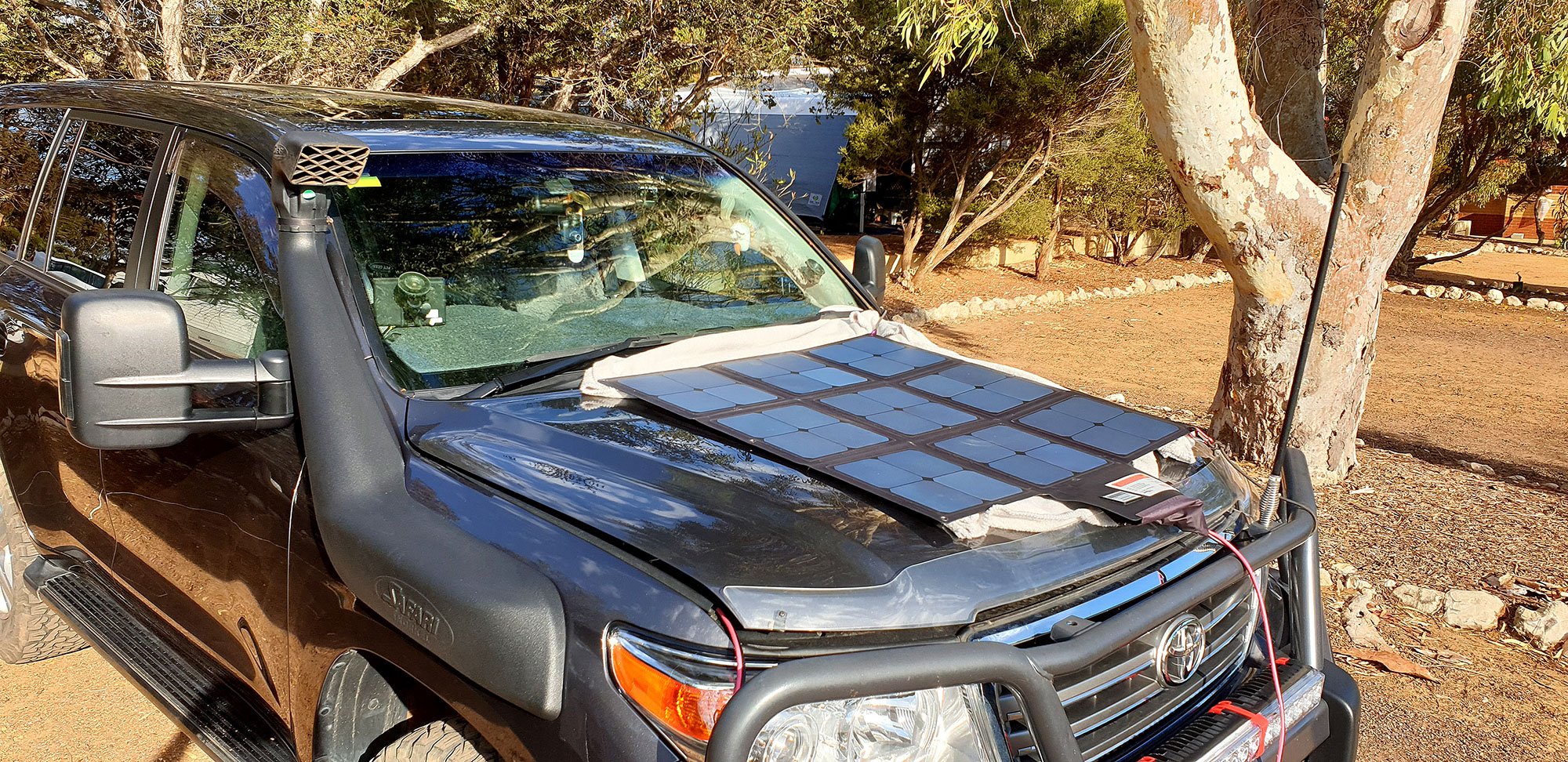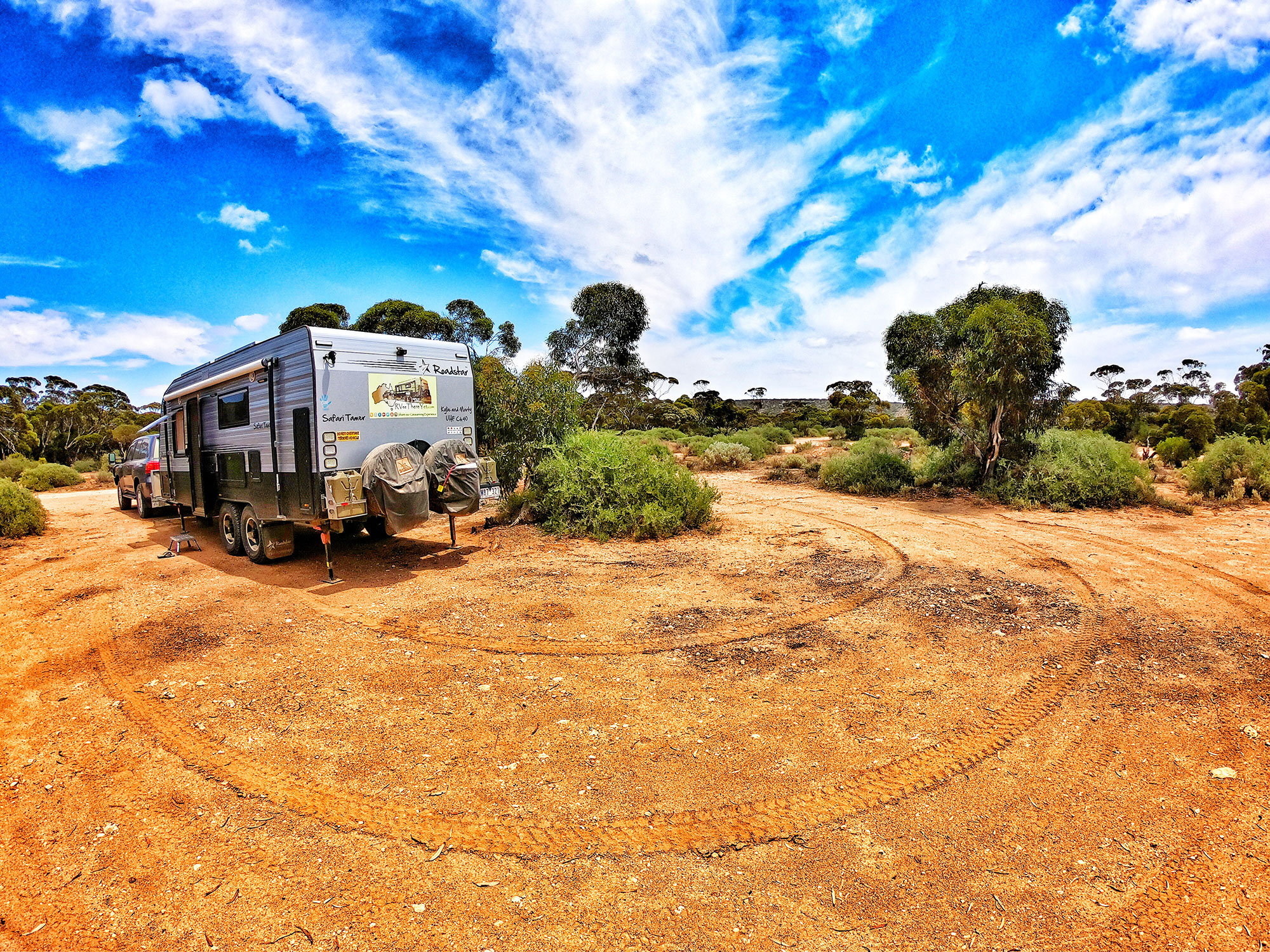How to park your caravan for solar and shade at the campsite




Find the best spot at camp to keep cool and power up. Shade vs sun: here’s how to park your van for both comfort and solar gain.
How many times have you pulled up to a campground, rushed around to find a good site, gotten all set up only to find out later that you’ve made a big mistake? The site has no shelter from the sun or there’s not enough sun to power your solar panels.
Whatever the problem, it could be enough to ruin your holiday. Here we look at what makes a great campsite and how a little consideration to a handful of factors can make all the difference when camping in your caravan this summer.

It doesn’t matter how well insulated modern caravans are, they are still basically an enclosed space and, when placed in direct sunlight, will heat up in a matter of hours, quicker during summer.
Apart from making the caravan extremely uncomfortable to live in, this heat can play havoc with electrical systems, batteries and put extra workload on our fridges.
Most modern caravans are well equipped for off-grid camping with solar panels on the roof to provide power to recharge large batteries. These batteries power everything including our fridges, water pumps, TVs and even power to recharge all our smart devices.
Unless we can get sufficient sun to fall on our solar panels, our batteries are not going to recharge sufficiently to meet our power requirements.

The fridge fitted to just about every caravan will be vulnerable to the heat from the sun shining on the side of the van where the fridge is situated. Ideally, we want to ensure that as little sun as possible falls on that side of the van to ensure our fridges are able to operate as efficiently as possible.
The more heat the fridge has to overcome, the harder it will work consuming gas or battery power depending on the type of fridge fitted.
The key to figuring all this out is to understand the sun and how its position in the sky changes depending on the time of day, the season and even our location.
Everyone knows the sun rises in the east and sets in the west and that the sun is at its highest point around midday. In any location south of the Tropic of Capricorn, during the winter months, the sun will be low in the north sky and any obstacles will cast long shadows all day.
Conversely, in summer, the sun is higher in the sky and, during the middle hours of the day, will cast short shadows.

Depending on the age of the caravan and the type of construction, the quality and effectiveness of the insulation can vary dramatically.
Newer vans built using Durabond or full composite construction will have excellent insulation properties. When it comes to older vans made with wood frames and aluminium cladding exteriors, the quality of the insulation varies depending on the care taken during the manufacture of the van itself. Some have very ineffective insulation as a result.
The majority of caravans will have the fridge on the passenger or offside of the caravan, the opposite side to where the awning is situated. Ideally, you want as little sun falling on the fridge side of the van as possible.
Roof-mounted solar panels are a convenient way to transport and use solar panels as they are set up ready to use. The problem is that the roof is not necessarily the best location for them to work continuously.
Unless the sun is directly above the roof of the van, roof-mounted solar panels will never produce as much power as they are capable of. Most of the time, obstacles like trees, buildings, air conditioners, roof vents, etc, all cast shadows over panels’ surface.
Combined with the low position of the sun in the winter sky this means roof-mounted solar panels will be lucky to be producing 30 percent of their capacity.

Always try to find a campsite that allows you to orientate your caravan such that the front faces east and the rear faces west. This way, the fridge side of your van will be shaded all day and your roof-mounted solar panels can get the maximum amount of sun on them all day.
If you’re camped under trees, the roof-mounted solar panels will be virtually useless. By plugging an external solar panel into your Anderson plug connection, you can augment your solar charging by placing the external panel in direct sunlight. Move it periodically as the position of the sun in the sky changes.
Fridge shades are available from most caravan accessory outlets and they are very effective at blocking the sun’s rays shining directly onto your fridge. They are a very easy DIY installation.
Just be careful not to set up it up so close to the van that it restricts valuable airflow through your fridge vents.
Closing your blinds blocks direct sunlight as well as radiated heat coming in through the windows and warming up your caravan. Most modern caravan windows will have blinds that have a reflective surface on the outside making them very effective at blocking heat.

Hot air rises and, unless it has somewhere to escape, it will build up and heat the inside of your van. By opening the roof hatches, you allow this hot air to escape.
This will draw in fresh air from outside through the door vent creating a slight airflow and making the van feel cooler inside.
There are loads of apps that can assist you with correctly positioning your caravan on a site. A compass app will allow you to ensure your van is positioned east-west.
A sun-tracking app will show you where the sun will be positioned at various times of the day allowing you to anticipate where any shadows will be cast. This allows you to position your external solar panels to best effect.
Ultimately, it’s not always going to be possible to perfectly align your caravan on every campsite you visit. There will be times when a great position with awesome views will mean practicalities, such as avoiding the heat of the sun heating your fridge, become less important.
Hopefully, some of the advice here will, at least, get you thinking about the best placement for your caravan to make your stay more comfortable and, ultimately, more enjoyable.